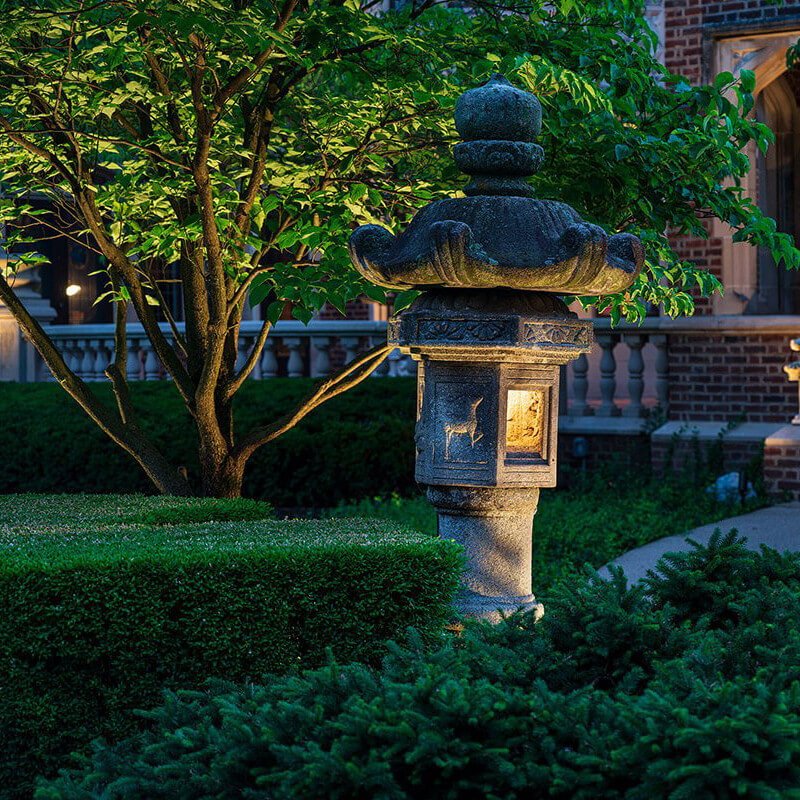The Importance of Pruning for Outdoor Lighting
Outdoor lighting plays a critical role in the aesthetics and functionality of your home’s exterior. It enhances curb appeal, provides safety and security, and creates a welcoming ambiance. However, to truly maximize the benefits of your outdoor lighting system, proper lawn care and pruning are essential. Neglecting these aspects can result in overgrown trees and shrubs that obscure lighting fixtures, rendering your carefully planned lighting design ineffective.
The Role of Pruning in Outdoor Lighting
Pruning trees and shrubs is a fundamental aspect of maintaining an effective outdoor lighting system. Over time, plants grow and can overshadow your lighting fixtures, diminishing their impact. Pruning ensures that your lights are visible and can perform their intended functions, whether it’s illuminating a pathway, highlighting architectural features, or creating a soft, ambient glow in your garden.
When trees and shrubs are not pruned, they can block the light, creating dark spots and reducing the overall effectiveness of your lighting design. This not only affects the aesthetic appeal but can also compromise safety. For instance, poorly lit pathways can become hazardous, and obscured security lights can make your home more vulnerable to intruders.
Timing is Everything: When to Prune
The timing of pruning is crucial for both the health of your plants and the efficiency of your outdoor lighting. Generally, the best time to prune most trees and shrubs is during their dormant season, which is late winter to early spring. During this period, plants are less likely to experience stress, and the risk of disease and pest infestation is minimized.
Pruning during the dormant season also allows you to shape plants before the onset of new growth, ensuring that your lighting fixtures remain unobstructed throughout the growing season. However, it’s important to note that some flowering shrubs are best pruned after they bloom. For instance, spring-blooming shrubs should be pruned immediately after their flowers fade to avoid cutting off next year’s buds.
The Importance of Regular Maintenance
Regular pruning is not a one-time task but an ongoing process that should be integrated into your lawn care routine. Consistent maintenance ensures that your outdoor lighting system remains effective year-round. It also promotes the health of your plants, encouraging strong growth and reducing the risk of disease.
In addition to pruning, other lawn care practices such as mowing, weeding, and mulching contribute to the overall effectiveness of your outdoor lighting. A well-maintained lawn reflects light better, enhancing the brightness and spread of your fixtures. Moreover, a tidy landscape complements your lighting design, creating a cohesive and visually appealing outdoor space.
Practical Tips for Pruning
When pruning, use sharp, clean tools to make precise cuts. Remove dead, diseased, or damaged branches first, then focus on thinning out crowded areas to allow light to penetrate through the canopy. Aim to create a balanced shape that complements your lighting design and the natural growth pattern of the plant.
For larger trees and shrubs, consider consulting a professional arborist. They can provide expert advice and ensure that pruning is done safely and effectively without damaging the plants or your property.
Conclusion
Lawn care and pruning are indispensable components of maintaining an effective and attractive outdoor lighting system. By keeping your plants well-maintained, you ensure that your lighting fixtures are not obscured, thereby maximizing their impact. Pruning at the right time and maintaining a regular lawn care routine will not only enhance the beauty of your home but also provide safety and security for you and your family. Investing time and effort into these practices will result in a stunning and functional outdoor space that you can enjoy all year round.

